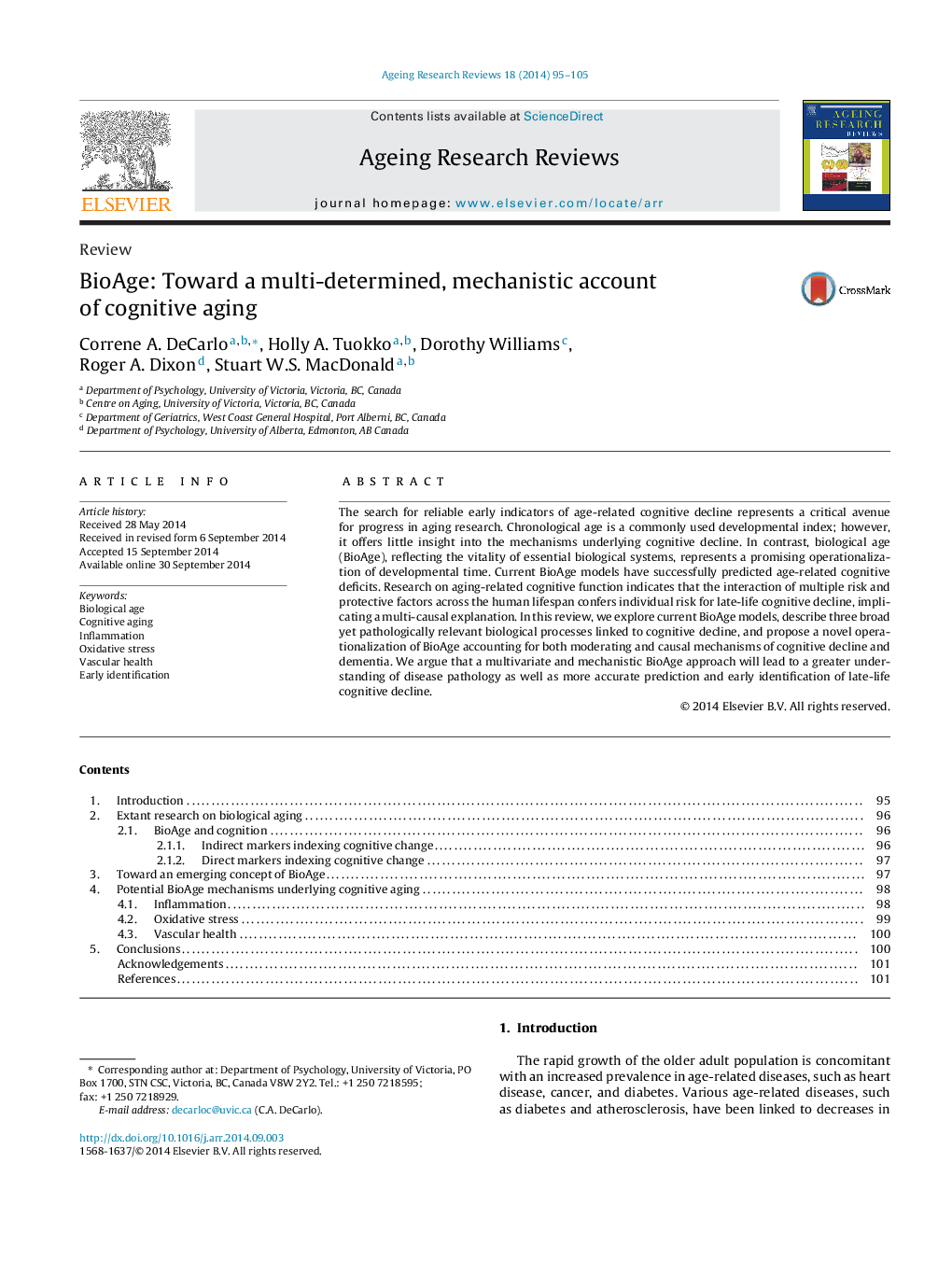| کد مقاله | کد نشریه | سال انتشار | مقاله انگلیسی | نسخه تمام متن |
|---|---|---|---|---|
| 1902239 | 1534313 | 2014 | 11 صفحه PDF | دانلود رایگان |

• A theoretical step forward in identifying early markers of cognitive decline.
• Emphasizes multivariate models for predicting cognitive impairment in late life.
• Identifies theoretically relevant biological processes of cognitive decline.
• Proposition of a novel BioAge operationalization of late-life cognitive decline.
The search for reliable early indicators of age-related cognitive decline represents a critical avenue for progress in aging research. Chronological age is a commonly used developmental index; however, it offers little insight into the mechanisms underlying cognitive decline. In contrast, biological age (BioAge), reflecting the vitality of essential biological systems, represents a promising operationalization of developmental time. Current BioAge models have successfully predicted age-related cognitive deficits. Research on aging-related cognitive function indicates that the interaction of multiple risk and protective factors across the human lifespan confers individual risk for late-life cognitive decline, implicating a multi-causal explanation. In this review, we explore current BioAge models, describe three broad yet pathologically relevant biological processes linked to cognitive decline, and propose a novel operationalization of BioAge accounting for both moderating and causal mechanisms of cognitive decline and dementia. We argue that a multivariate and mechanistic BioAge approach will lead to a greater understanding of disease pathology as well as more accurate prediction and early identification of late-life cognitive decline.
Journal: Ageing Research Reviews - Volume 18, November 2014, Pages 95–105